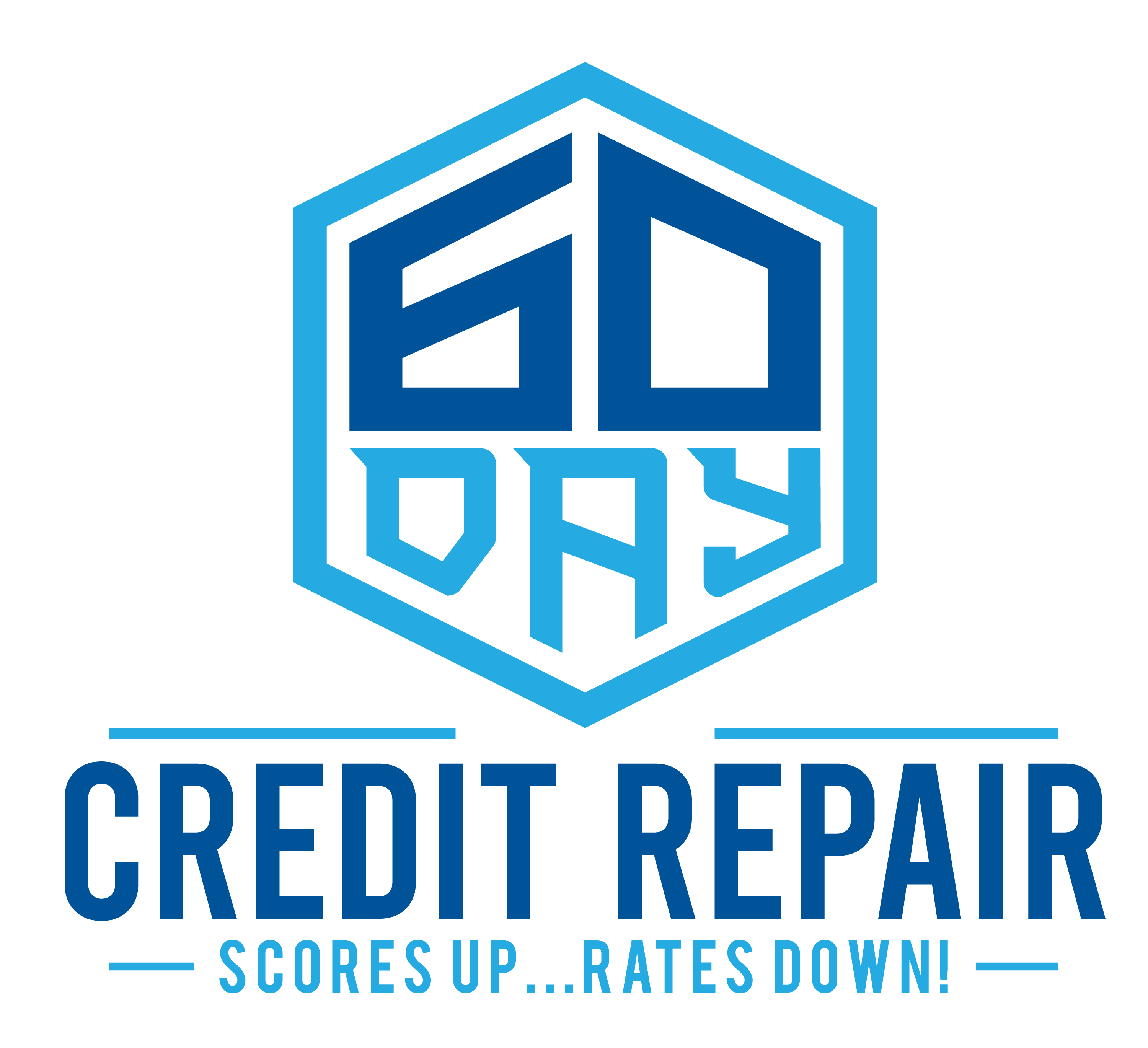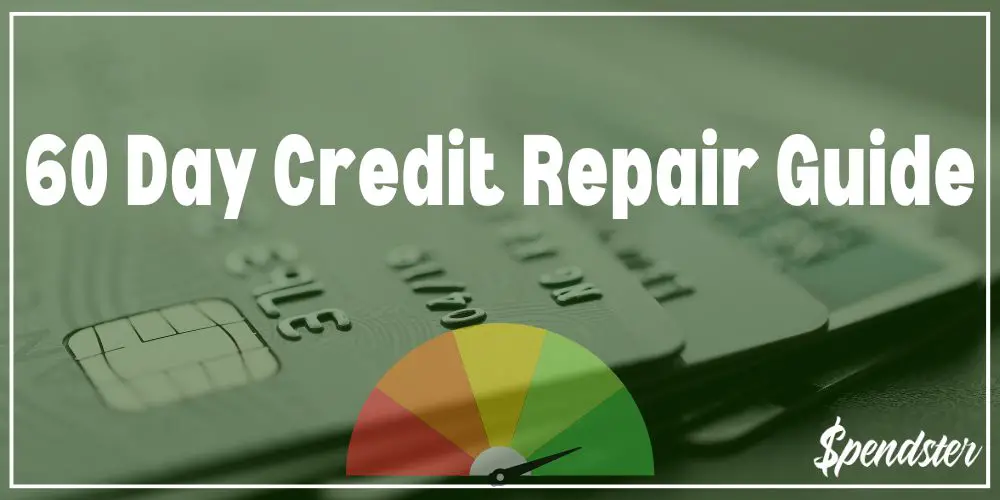So, you’re looking to fix your credit score, huh? Well, you’re in luck because we’ve got just the thing for you: 60 Day Credit Repair. In just two months, this program promises to turn your credit woes into a thing of the past. Whether you’ve been plagued by late payments, unpaid bills, or maxed-out credit cards, 60 Day Credit Repair claims to have all the strategies and expertise needed to get your credit score back on track. Say goodbye to endless phone calls from debt collectors and hello to financial freedom. Curious to find out more? Keep reading!

Assessing Your Credit Score
Understanding the Importance of Credit Score
Your credit score is a crucial number that plays a significant role in your financial life. It determines your creditworthiness and affects your ability to obtain loans and credit cards, secure favorable interest rates, and even rent an apartment. Understanding the importance of your credit score is the first step towards improving it.
A higher credit score reflects responsible financial behavior, while a lower score may indicate credit issues or negative marks on your credit report. By maintaining a good credit score, you demonstrate to lenders that you are a reliable borrower, making it easier for you to access credit and favorable lending terms.
Obtaining Your Credit Report
To begin your credit repair journey, you need to obtain a copy of your credit report. This report contains valuable information about your credit history, including open and closed accounts, payment history, outstanding debts, and any negative marks or errors.
Thanks to the Fair Credit Reporting Act (FCRA), you are entitled to a free copy of your credit report from each of the three major credit bureaus (Equifax, Experian, and TransUnion) once every 12 months. Take advantage of this opportunity and request your credit reports to assess your current financial standing.
Analyzing Your Credit Report
Once you have your credit reports in hand, it’s time to analyze them thoroughly. Look for any discrepancies, inaccuracies, or potential errors that may be impacting your credit score. Common issues include incorrect personal information, outdated accounts, duplicate entries, or late payments that should have been reported as paid on time.
Highlight these questionable items, as they will be the focus of your credit repair efforts in the upcoming days. It is essential to have a clear understanding of what is affecting your credit score negatively before you can take the appropriate steps to address these issues.
Identifying Credit Issues
Common Credit Problems
Identifying common credit problems is an important part of the credit repair process. By recognizing these issues, you can address them effectively and take the necessary steps towards improving your credit standing.
Some common credit problems include late payments, high credit utilization, outstanding debts, collections, bankruptcies, and foreclosures. Each of these issues has a negative impact on your credit score and should be addressed promptly to begin the repair process.
Identifying Negative Items
As you delve deeper into your credit report analysis, it’s crucial to identify any negative items that may be dragging down your credit score. Negative items include late payments, charge-offs, collections, and public records such as bankruptcies and tax liens.
Keep track of these negative items, as they will be the focus of your efforts to dispute and improve your credit history. While negative items can remain on your credit report for several years, there are steps you can take to mitigate their impact and potentially remove them entirely.
Understanding Credit Inquiries
Credit inquiries are another factor that can affect your credit score. There are two types of credit inquiries: hard inquiries and soft inquiries. Hard inquiries occur when a lender or creditor requests your credit report as part of a credit application process. Too many hard inquiries within a short period can lower your credit score.
On the other hand, soft inquiries, such as credit checks conducted by yourself or promotional inquiries, do not impact your credit score. It’s important to be aware of the impact of credit inquiries and consider them when determining your credit repair plan.
Creating a Plan of Action
Setting Credit Repair Goals
Before diving into the credit repair process, it’s essential to set clear goals for yourself. These goals will serve as your roadmap and keep you focused on improving your credit score within the 60-day timeframe.
Your credit repair goals may include raising your credit score by a certain number of points, paying off outstanding debts, removing negative items from your credit report, and establishing positive credit habits. By setting specific and achievable goals, you can track your progress and celebrate milestones along the way.
Developing a Budget
An integral part of your credit repair plan is developing a budget. Understanding your income, expenses, and debt obligations is crucial for effective debt repayment and financial management.
Start by listing all your sources of income and your fixed monthly expenses, such as rent or mortgage payments, utilities, and insurance. Then, identify discretionary expenses that can be reduced or eliminated to allocate more funds towards debt repayment and improving your credit.
Prioritizing Debt Repayment
With a budget in hand, it’s time to prioritize your debt repayment strategy. Begin by making a list of all your outstanding debts, including credit card balances, loans, and any other financial obligations.
Consider utilizing one of two popular debt repayment methods: the debt snowball method or the debt avalanche method. The debt snowball method involves prioritizing the smallest debts first, while the debt avalanche method focuses on paying off debts with the highest interest rates.
Choose the method that aligns with your financial goals and allocate any extra funds towards paying down your debts. By reducing your debt load, you can both minimize interest charges and improve your credit utilization ratio, a key factor in determining your credit score.
Disputing Inaccurate Information
Gathering Supporting Documentation
To dispute inaccurate information on your credit report successfully, you will need supporting documentation. This documentation will serve as evidence to contest any discrepancies or errors that may be impacting your credit score negatively.
Gather any documents related to the disputed accounts or negative items, such as payment receipts, bank statements, or letters from the creditor. These documents can help you build a strong case when submitting your dispute to the credit bureaus.
Crafting Effective Dispute Letters
Once you have gathered your supporting documentation, it’s time to craft effective dispute letters to send to the credit bureaus. When writing your dispute letters, be clear, concise, and professional. Clearly state the reason for your dispute and provide all relevant supporting evidence.
Remember to include your name, address, and account information for each disputed item. Request that the credit bureaus investigate and correct any erroneous information on your credit report. Keep copies of all correspondence for your records.
Submitting Disputes to Credit Bureaus
After crafting your dispute letters, it’s time to submit them to the credit bureaus. Send your letters via certified mail with a return receipt requested to ensure they are received and documented.
The credit bureaus have 30 days to investigate and respond to your disputes. During this time, they will communicate with the relevant data furnishers, such as creditors or collection agencies, to verify the accuracy of the disputed information.

Negotiating with Creditors
Reaching Out to Creditors
While disputing inaccurate information is essential, it’s equally important to reach out to your creditors directly to negotiate favorable outcomes. Establishing open lines of communication can help you explore potential settlements or payment plans to address your outstanding debts.
When contacting your creditors, explain your financial situation honestly and express your commitment to resolving your debts. Creditors may be willing to offer reduced payment amounts, extended payment terms, or even remove negative marks in exchange for full or partial payment.
Requesting Debt Validation
When dealing with collection agencies or unfamiliar creditors, it’s important to request debt validation. Debt validation is the process of verifying that the debt being pursued is valid and that the collection agency has the legal right to collect on the debt.
Send a debt validation letter to the collection agency requesting detailed information about the debt, including the original creditor, the amount owed, and proof that they have the legal authority to collect on the debt. If the collection agency fails to provide valid proof, the debt may be invalidated, and you won’t be responsible for paying it.
Negotiating Settlements or Payment Plans
If you’re unable to pay off your debts in full, negotiating settlements or payment plans can provide a pathway towards debt resolution. Contact your creditors or collection agencies and propose a settlement offer or a realistic payment plan.
When negotiating settlements, aim to pay a percentage of the outstanding balance in exchange for the creditor considering the debt fully paid. With payment plans, propose a monthly payment amount that you can afford and agree upon with the creditor.
Be sure to get all negotiated agreements in writing and keep records of your payments. By fulfilling your negotiated agreements, you can improve your credit standing and potentially remove negative marks from your credit report.
Establishing Positive Credit Habits
Paying Bills on Time
One of the most crucial habits to establish for credit repair is paying your bills on time. Payment history accounts for a significant portion of your credit score, and missing payments or paying late can have a detrimental impact.
Set up reminders or automatic payments to ensure you never miss a payment deadline. Paying your bills on time consistently shows lenders that you are a responsible borrower, improving your creditworthiness.
Keeping Credit Utilization Low
Another important credit habit is to keep your credit utilization low. Credit utilization refers to the amount of available credit you are using. Ideally, you should aim to keep your credit utilization below 30% of your total credit limit.
To achieve this, consider paying down balances on your credit cards and avoid maxing out your credit limits. By managing your credit utilization carefully, you demonstrate responsible credit use and positively impact your credit score.
Building a Positive Payment History
Building a positive payment history is key to improving your credit score in the long term. By consistently making payments on time and in full, you establish a track record of responsible credit use.
Consider obtaining credit accounts specifically designed to build credit, such as secured credit cards or credit builder loans. These types of accounts allow you to make regular payments and demonstrate your ability to manage credit responsibly.

Exploring Credit Building Options
Secured Credit Cards
Secured credit cards can be an excellent option for building credit. These cards require a security deposit that serves as collateral for your credit line. By using a secured credit card responsibly, you can demonstrate positive payment history and boost your credit score.
It’s important to choose a secured credit card that reports to all three major credit bureaus, as this will ensure that your responsible credit use is reflected in your credit history. Make small purchases and pay them off in full every month to maximize the positive impact on your score.
Credit Builder Loans
Credit builder loans are another option to consider for credit building. These loans are specifically designed to help individuals establish or improve their credit history. With a credit builder loan, you borrow a predetermined amount from a lender and make fixed monthly payments over a set period.
The lender holds the loan proceeds in a separate account, and once you have made all the payments, the funds are released to you. As you make timely payments on the loan, your positive payment history is reported to the credit bureaus, helping to strengthen your credit profile.
Authorized User Accounts
Becoming an authorized user on someone else’s credit card account can also assist with building credit. If you have a trusted family member or friend with a good credit history, ask if they would be willing to add you as an authorized user.
As an authorized user, the credit card account’s positive payment history and responsible credit utilization will be reflected on your credit report. Bear in mind that if the primary cardholder does not manage the account responsibly, it could have a negative impact on your credit.
Avoiding Common Credit Mistakes
Closing Credit Accounts
It may seem counterintuitive, but closing credit accounts can negatively impact your credit score. When you close a credit card or loan account, you reduce your total available credit, which can increase your credit utilization ratio.
If you have paid off a credit card or loan, consider keeping the account open to maintain a longer credit history and a lower credit utilization ratio. Closing accounts should only be done strategically and for the right reasons, such as excessive fees or poor account management.
Applying for Too Much New Credit
While it may be tempting to apply for new credit to improve your credit mix, applying for too much new credit can actually harm your credit score. Each time you apply for new credit, a hard inquiry is generated, and too many hard inquiries can lower your score.
Be selective when applying for new credit and ensure that you meet the qualification criteria before submitting an application. Focus on managing your existing credit responsibly to gradually improve your creditworthiness.
Ignoring Credit Monitoring
Credit monitoring is an essential tool for maintaining control of your credit health. With credit monitoring services, you can receive alerts and updates regarding changes to your credit report, including new accounts, credit inquiries, or potential fraud.
By regularly monitoring your credit, you can detect any suspicious activity early and take immediate action to rectify the situation. Ignoring credit monitoring can leave you vulnerable to identity theft or other fraudulent activities that can severely impact your credit.
Long-Term Credit Maintenance
Maintaining Good Financial Habits
To ensure your credit remains in good standing beyond the 60-day credit repair period, it’s important to maintain good financial habits. Make a commitment to responsible credit use, budgeting, and paying your bills on time consistently.
Continue monitoring your credit regularly and addressing any negative items or discrepancies promptly. By practicing good financial habits, you can maintain a strong credit history and ensure your creditworthiness in the long run.
Regularly Checking Your Credit
Even after the initial 60-day credit repair period, it’s crucial to regularly check your credit. Review your credit reports at least annually, if not more frequently, to ensure accuracy and detect any potential errors.
By staying informed about your credit status, you can address any issues promptly and prevent them from escalating. Maintaining an ongoing awareness of your credit is an essential part of responsible credit management.
Building a Strong Credit History
Building a strong credit history is an ongoing process. It requires a combination of responsible credit use, timely payments, and maintenance of good financial habits over an extended period.
Take advantage of credit-building opportunities such as secured credit cards, credit builder loans, and authorized user accounts to continue strengthening your credit. By consistently demonstrating positive credit behavior, you can establish a robust credit history that will serve you well in the future.
In conclusion, repairing your credit within a 60-day timeframe requires a comprehensive approach. By assessing your credit score, identifying credit issues, creating a plan of action, disputing inaccurate information, negotiating with creditors, establishing positive credit habits, exploring credit-building options, avoiding common credit mistakes, and maintaining good financial habits, you can significantly improve your credit standing. Take the necessary steps, be patient, and remain dedicated to achieving your credit repair goals.
